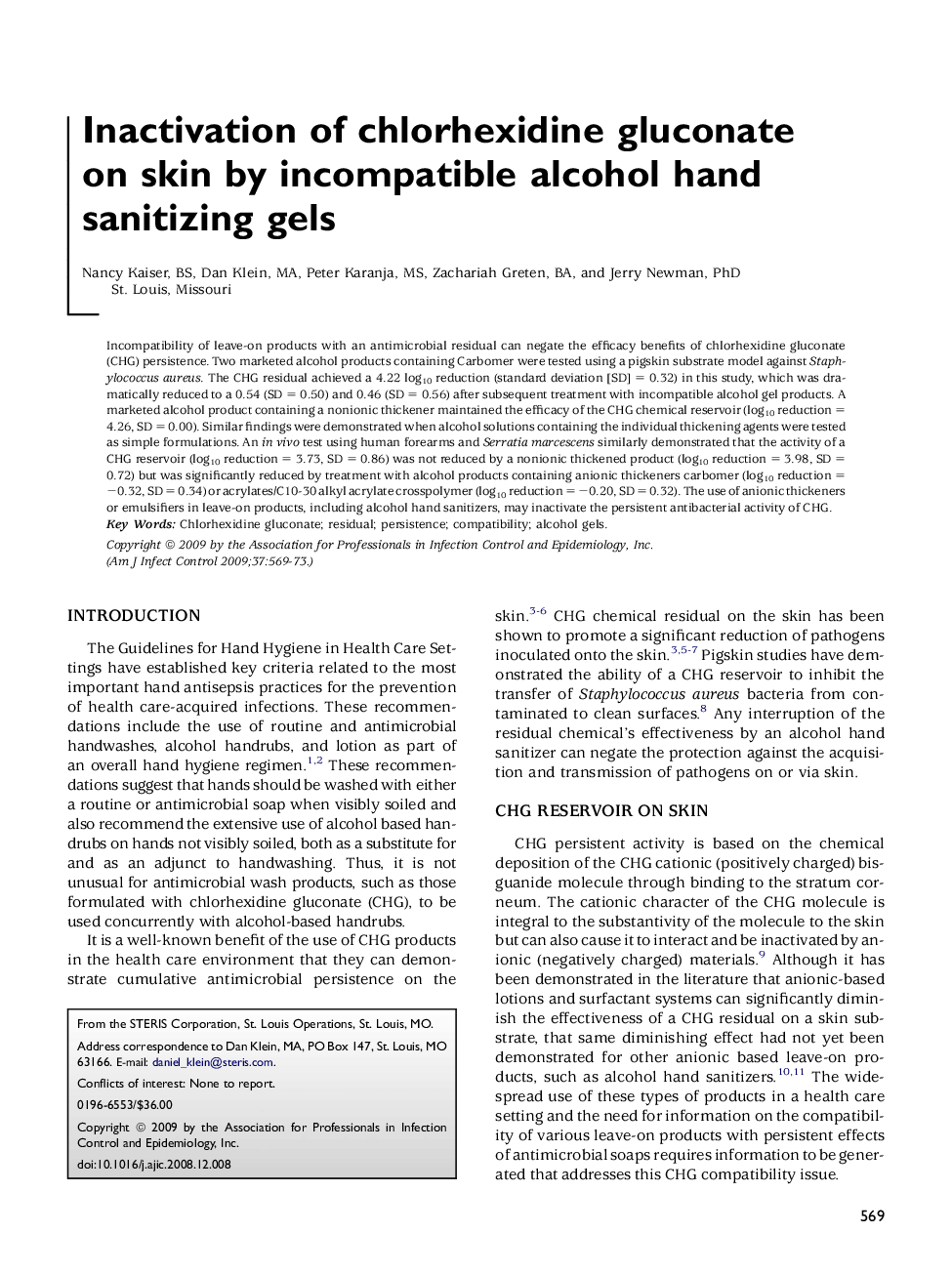| کد مقاله | کد نشریه | سال انتشار | مقاله انگلیسی | نسخه تمام متن |
|---|---|---|---|---|
| 2638760 | 1563543 | 2009 | 5 صفحه PDF | دانلود رایگان |

Incompatibility of leave-on products with an antimicrobial residual can negate the efficacy benefits of chlorhexidine gluconate (CHG) persistence. Two marketed alcohol products containing Carbomer were tested using a pigskin substrate model against Staphylococcus aureus. The CHG residual achieved a 4.22 log10 reduction (standard deviation [SD] = 0.32) in this study, which was dramatically reduced to a 0.54 (SD = 0.50) and 0.46 (SD = 0.56) after subsequent treatment with incompatible alcohol gel products. A marketed alcohol product containing a nonionic thickener maintained the efficacy of the CHG chemical reservoir (log10 reduction = 4.26, SD = 0.00). Similar findings were demonstrated when alcohol solutions containing the individual thickening agents were tested as simple formulations. An in vivo test using human forearms and Serratia marcescens similarly demonstrated that the activity of a CHG reservoir (log10 reduction = 3.73, SD = 0.86) was not reduced by a nonionic thickened product (log10 reduction = 3.98, SD = 0.72) but was significantly reduced by treatment with alcohol products containing anionic thickeners carbomer (log10 reduction = −0.32, SD = 0.34) or acrylates/C10-30 alkyl acrylate crosspolymer (log10 reduction = −0.20, SD = 0.32). The use of anionic thickeners or emulsifiers in leave-on products, including alcohol hand sanitizers, may inactivate the persistent antibacterial activity of CHG.
Journal: American Journal of Infection Control - Volume 37, Issue 7, September 2009, Pages 569–573